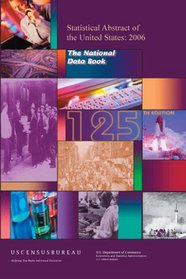Skepticism of gender pay gap and President Obama’s “Equal Pay Day” proclamation
President Barack Obama recently declared April 9 as “Equal Pay Day,” calling for Americans to “acknowledge the injustice of wage inequality” between men and women which, according to the proclamation, is a 23% pay disparity between men and women in the workforce. The proclamation reads as follows:
Over the past 4 years, the American people have come together to lift our economy out of recession and forge a foundation for lasting prosperity. Our businesses have created millions of new jobs, our stock market is rebounding, and our housing market has begun to heal. But even now, too many Americans are seeing their hard work go unrewarded because of circumstances beyond their control. Women — who make up nearly half of our Nation’s workforce — face a pay gap that means they earn 23 percent less on average than men do. That disparity is even greater for African-American women and Latinas. On National Equal Pay Day, we recognize this injustice by marking how far into the new year women have to work just to make what men did in the previous one.
Wage inequality undermines the promise of fairness and opportunity upon which our country was founded. For families trying to make ends meet, that gap can also mean the difference between falling behind and getting ahead. When working mothers make less than their male counterparts, they have less to spend on basic necessities like child care, groceries, and rent. Small businesses see fewer customers walk through their doors. Tuition payments get harder to afford, and rungs on the ladder of opportunity get farther apart. And just as diminished wages shortchange families, they slow our entire economy — weakening growth here at home and eroding American competitiveness abroad.
To grow our middle class and spur progress in the years ahead, we need to address longstanding inequity that keeps women from earning a living equal to their efforts. That is why I have made pay equity a top priority — from signing the Lilly Ledbetter Fair Pay Act days after I took office to cracking down on equal pay law violations wherever they occur. And to back our belief in equality with the weight of law, I continue to call on the Congress to pass the Paycheck Fairness Act.
Our country has come a long way toward ensuring everyone gets a fair shot at opportunity, no matter who you are or where you come from. But our journey will not be complete until our mothers, our wives, our sisters, and our daughters are treated equally in the workplace and always see an honest day’s work rewarded with honest wages. Today, let us renew that vision for ourselves and for our children, and let us rededicate ourselves to realizing it in the days ahead.
NOW, THEREFORE, I, BARACK OBAMA, President of the United States of America, by virtue of the authority vested in me by the Constitution and the laws of the United States, do hereby proclaim April 9, 2013, as National Equal Pay Day. I call upon all Americans to recognize the full value of women’s skills and their significant contributions to the labor force, acknowledge the injustice of wage inequality, and join efforts to achieve equal pay.
IN WITNESS WHEREOF, I have hereunto set my hand this eighth day of April, in the year of our Lord two thousand thirteen, and of the Independence of the United States of America the two hundred and thirty-seventh.
BARACK OBAMA
I’m skeptical.
President Obama’s press release contains no citation or explanation concerning this 23% figure. Might, as Barack Obama suggests, there exist a “longstanding inequity” and “injustice of wage inequality” which “undermines the promise of fairness and opportunity upon which our country was founded” and prevents women from earning a fair wage?
What does an evaluation of relevant literature have to say about the gender pay gap?
Is evidence of a pay gap evidence of gender discrimination?
What are people talking about when they say ‘gender pay gap?’
What can account for the pay gap?
A review of relevant literature admits of a pay gap between men and women and explains why the pay gap may exist. Pay gap percentages in the literature vary from 18% to 7% depending on data analysis and factors researchers control for although some important factors — most prominently including whether women are bearing or rearing children (and how many) – are not controlled for although research suggests childbearing and child-rearing are associated with lower pay outcomes.
Berk (2008) suggests that although women are represented in nearly all professions, women’s skills are not fully developed as they remain concentrated in occupations with little chance for advancement while also being underrepresented in management and executive roles. In virtually all professions, the achievements of women lag behind those of men who write more books, make more discoveries, hold more leadership positions, and produce more works of art.
According to the United States Census Bureau (2006), women are most represented in less affluent professions including
nursing, education, and social work. Women are underrepresented in as engineers, doctors, CEOs, business executives, and lawyers – all professions which are more lucrative when compared to the professions in which women are most represented. Women comprise 92.2% of registered nurses, 83.2% of librarians and museum curators, 81.3% of elementary and middle school teachers, 77.7% of social workers, 66.7% of psychologists, 36.7% of business executives at all levels, 29.4% of lawyers and doctors, 23% of CEOs of large corporations, and 9.2% of engineers.
According to Prokos & Padavic (2005), the average American woman aged 25 to 34 earns $0.84 cents when compared to men of the same age range. Gender disparities in career development, according to Venable (2002), largely account for the earnings gap. According to Hynes & Clarkberg (2005) and information from the United States Department of Labor (2004), women in traditionally feminine occupations typically plan for the short-term while entering and exiting the labor market as they rear children and give birth.
Compared to men aged 18 to 34 who are out of the labor force 11% of time, women of the same age range are absent from the workforce 26% of time. Blair-Loy & DeHart (2003) explain that time away from the workforce greatly impedes advancement and is a major reason why women in male-dominated prestigious careers may often delay or avoid childbearing.
Petersen & Gonzales (1999) claim that low self-efficacy in regard to male-dominated fields limits the career progress of women. Women who work in male-dominated fields typically have high achievement orientation, self-reliance, and a belief that they can be successful because of their efforts. According to Lindley (2005), women with high self-efficacy are less certain – in comparison with men – that they can achieve career success.
O’Neill, Horton, & Crosby (1999) explain that family obligations and gender-stereotyped images of women as followers — as opposed to gender-stereotyped images of men as leaders — deter women from advancing into top-level positions of management. The absence of women as mentors — due to the fact that men dominate high-status fields — may also place women at a disadvantage because women with female mentors tend to be more productive.
The American Association of University Women (2013), in a document investigating the gender wage gap, suggests that part of the pay gap cannot be explained by factors known to affect earnings and is likely due to discrimination. According to the AAUW, when comparing women’s annual earnings as a percentage of men’s annual earnings for full-time and year-round workers in the year 2001, women were paid 77% of what men were paid; in 2011, the median annual earnings of men in the United States was $37,118 while the median annual earnings of women in the United States was $48,202.
The AAUW reports that the pay gap is, in part, due to the choices of men and women including selection of college major and job pursued after graduation. One year after college graduation, the AAUW notes, women were paid 82% of what their male counterparts were paid. When controlling for college major, occupation, economic sector, hours worked, months unemployed since graduation, GPA, type of undergraduate institution, institution selectivity, age, geographical region, and marital status, a 7 percent difference exists when comparing earnings of men and women one year after college graduation. 10 years after college graduation, according to the AAUW, the pay gap widens from 7 percent to 12 percent.
Women, as parents, have drastically different outcomes than men. 10 years after college graduation, 23% of mothers in the AAUW’s sample size were no longer in the workforce and 17% worked part-time. Only 1% of fathers were no longer in the workforce and 2% worked part-time. The AAUW notes that prospective full-time working mothers face more difficultly when compared with fathers because working mothers are less likely to be hired by employers – partially because of time away from the workforce.
The AAUW explains that jobs traditionally dominated by men pay better than jobs dominated by women. In 2011, over 40% of women in the workforce worked in female-dominated professions including social work, nursing, and teaching while 5% of men worked in these fields. 44% of men in the workforce worked in male-dominated professions including computer programming, aerospace engineering, and firefighting while 6% of women worked in these fields. Men are more likely to work in the fields of construction, maintenance, repair, and transportation while women are more likely to work in the fields of sales, service, and in professional capacities in office and administrative support.
Women can take action to reduce the pay gap. The AAUW notes that not all college majors provide a solid foundation for a prosperous financial future; outcomes vary from major to major. Early selection of careers and jobs also typically fixates women (and men) in a particular area of work. Selection of more profitable career choices, then, at an early time, should allow for more prosperous outcomes. The AAUW also encourages women to improve and analyze their negotiation skills with employers because better negotiation skills are associated with better pay outcomes.
The AAUW, in an older document (2007), provides more information concerning the pay gap which appears to be omitted from their 2013 report. While the 2007 document, in addition to the latest document, professes the wage gap may not be accounted for by choices women make [the AAUW suggests choices may only partially explain the pay gap], several explanations are given which may account for the pay gap: women are more likely than men to take time off work including — but not limited to – family leave and childcare leave. Men also report working longer hours when compared with women because women are more likely to — while working — continue investing in post-secondary education. Women are more also more likely to be employed part-time, thus earning less than men.
Common themes in the literature include recognition of the pay gap – not necessarily as a result of gender discrimination, but rather — in most cases — gender-based differences between women and men, assumed childcare responsibilities and childbearing, choice of career and area of study in post-secondary and secondary education, and time spent in the workplace. Although the AAUW professes the gender gap cannot be fully explained by lifestyle choices, many reasons provided by literature (including reasons provided by the AAUW) are plausible explanations which may – without resorting to explanations of discrimination – account for the wage gap or, when controlled for, shrink the wage gap.
Specific, operational definitions are important when considering the gender wage gap. Depending on how the wage gap is defined — ranging from comparison of median incomes of men and women to comparison of median incomes of men and women while controlling for various important factors in a specific timeframe – different results will be reported and analyzed by researchers and the public at large.
Stating that women are paid 77% or 82% of what men are paid may be attractive to suit a political or social agenda, but this does not appear to be an honest way to present the pay gap – especially when the gap shrinks as important factors are controlled for and the measure of the pay gap comes from comparison within professions (pay of teachers compared to pay of teachers, for example) rather than between professions (pay of engineers compared to pay of teachers).
Researchers may be wise to stray away from explanations of gender discrimination to account for the pay gap, especially when failing to present evidence suggesting gender discrimination exists in particular cases. The existence of pay disparities, even within particular fields, is not necessarily evidence of discrimination. How is gender discrimination operationally defined? How might discrimination be measured? Additionally, a lack of explanation pertaining to the pay gap does not necessarily suggest discrimination; instead, a lack of explanation admits of an oversight on behalf of researchers and a need for future research.
AAUW data concerning a 7% pay gap does not control for women with children and, because of this, the pay gap may be larger than it would be if childbearing or child-rearing were controlled for in data analysis. The AAUW and a review of the literature concerning the gender wage gap suggests that women with children are at an economic disadvantage in the workplace for several reasons previously explained, so this would be an important factor for which to control.
Popular media outlets, government officials, feminist organizations, and laypersons ought to – to be more honest with their analysis and/or trumpeting of statistics – be clear when speaking about the gender wage gap by providing operational definitions and explanations for why men typically earn more than women in the workplace. Rather than hastily assuming gender discrimination or institutional problems, plausible hypotheses which may explain the gender pay gap ought to be considered.
A lack of ‘pay equity’ — statistically equal or statistically insignificant data — whether or not controlling for important considerations which may account for pay gaps is not necessarily evidence of gender discrimination or reason for government intervention. Being more honest with interpretations of data will allow for persons interested in shrinking the pay gap to approach the problem in a meaningful way and for women to not assume a fatalistic attitude of consignment to gender discrimination.
President Obama’s rhetoric is overstreteching, ill-defined, and inconsistent with what literature concerning the gender pay gap suggests. Inequity and inequality are not the best explanations to account for the gender wage gap which can better be explained by the career choices of men and women, career planning, men working more hours (and staying in) the workforce, gender differences, familial obligations and choices pertaining to child-bearing and child-rearing, and pay negotiation skills and assertiveness. Let’s more honestly evaluate data and not rush to conclusions of inequality and gender discrimination.
—
References
American Association of University Women, (2007). Behind the pay gap.
American Association of University Women, (2013). The simple truth about the gender pay gap.
Berk, L. (2008). Exploring lifespan development. (1st ed., p. 360). Boston: Pearson.
Blair-Loy, M., & DeHart, G. (2003). Family and career trajectories among African-American female attorneys. Journal of Family Issues, 24, 908-933.
Hynes, K. & Clarkberg, M. (2005). Women’s employment patterns during early parenthood: A group-based trajectory analysis. Journal of Marriage and Family, 67, 222-239.
Lindley, L.D. (2005). Perceived barriers to career development in the context of social-cognitive career theory. Journal of Career Assessment, 13, 271-287.
O’Neill, R.M., Horton, S., & Crosby, F.J. (1999). Mentoring Dilemmas (pp. 63-80). Mahwah, NJ: Erlbaum.
Petersen, N., & Gonzalez, R.C. (1999). Career counseling models for diverse populations. Belmont, CA: Wadsworth.
Prokos, A. & Padavic, I. (2005). An examination of competing explanations for the pay gap among scientists and engineers. Gender and Society, 19, 523-543.
U.S. Census Bureau. (2006). Statistical abstract of the United States (125th ed.). Washington, DC: U.S. Government Printing Office.
U.S. Department of Labor. (2004, August 25). Number of jobs held, labor market activity, and earnings growth among younger baby boomers: Recent results from a longitudinal survey. News USDL04-1678. Washington DC: Bureau of Labor Statistics.
Venable, D. (2002). The wage gap myth. Dallas: National Center for Policy Analysis.





Recent Comments